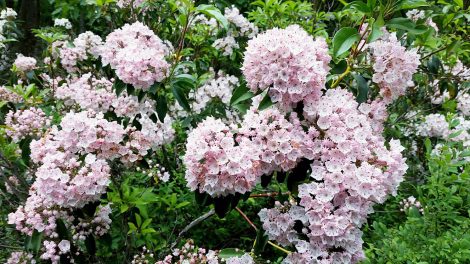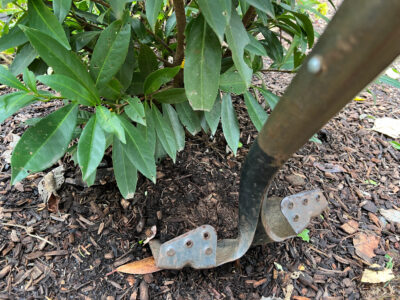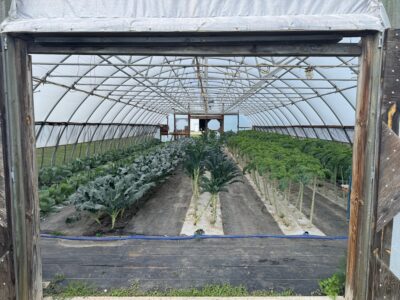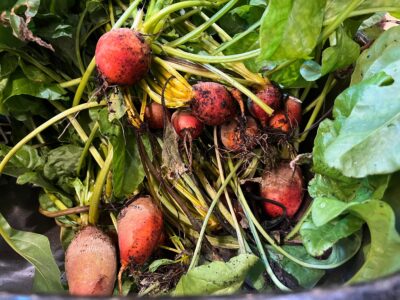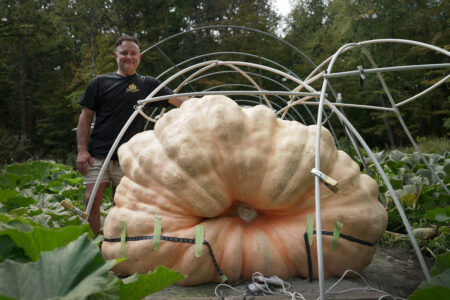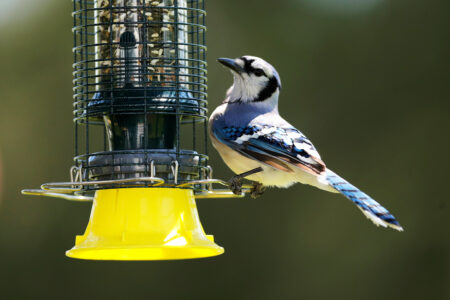Growing Tips: Mountain Laurel or Rhododendron?
- PHOTO PROVIDED Mountain laurel (Kalmia latifolia) is seen blooming in western Clinton County in this photo taken by Debra Burrows.

PHOTO PROVIDED Mountain laurel (Kalmia latifolia) is seen blooming in western Clinton County in this photo taken by Debra Burrows.
Recently, a friend who is an experienced hiker asked, “How do you tell the difference between mountain laurel and rhododendron?” She and a group of fellow hikers had seen some bushes while walking along a local mountain trail but didn’t know if they were laurel or rhododendron.
That’s not surprising, because mountain laurel and rhododendron have many similarities. Both are members of the Ericaceae family of plants and both are native to Pennsylvania.
Mountain laurel (Kalmia latifolia) was designated the State Flower of Pennsylvania by the Pennsylvania General Assembly in 1933. It was an appropriate choice. Laurel appears in abundance in mountainous areas throughout the state and when in bloom, is one of the most beautiful of all native shrubs. In late spring, the plants are covered in clusters of delightful, one-inch-wide, bell-shaped flowers in shades of pink and white, some with red veins.
In central Pennsylvania, mountain laurel usually blooms in late May and June, with bloom coming later as elevation increases. It is classified as a broadleaf evergreen, meaning that its green, somewhat glossy leaves, which can be up to five inches long, do not drop in autumn but remain on the plant, adding color to winter landscapes. As it ages, the branches of mountain laurel become crooked. It thrives in poor soil with good drainage. Mountain laurel prefers partly sunny locations that offer some afternoon shade, but will tolerate both sunny and shady locations. It’s important to note that many parts of the mountain laurel plant can be toxic to both humans and animals.
Mountain laurel shrubs can reach 15 feet high and eight feet wide and are often seen in swaths along forest roads and trails. When in full bloom, they seem to cover an area in pink and white clouds. I’ve had the privilege of witnessing mountain laurel in bloom along remote trails and can say without exaggeration that it is an awe-inspiring experience. So much so that my husband and I have an annual ritual of getting out into the mountains to view the laurel in bloom.
Rhododendron (Rhododendron maximum), like laurel, is abundant in mountainous regions of Pennsylvania. Rhododendron shrubs tend to grow wider than mountain laurel, reaching 12 feet across with a height of 15 feet. They form thickets or groves in shady and partially shaded areas that tend to be cool and moist. Their dark bluish-green leaves are larger than those of mountain laurel and have reddish-brown undersides.
Rhododendron is a broad leaf evergreen, keeping its leaves throughout the winter season. In extremely cold, windy weather and in drought conditions, rhododendron leaves will roll up to decrease their exposed surface area and retain moisture. Leaves will unfurl when conditions improve. Rhododendron prefer organically rich, acidic soil that drains well. They have shallow root systems which are intolerant of both drought and wet feet. Many parts of the rhododendron plant are toxic.
In the mountains of central Pennsylvania, rhododendron usually bloom in late June and early July. Cup-shaped flowers, up to two inches across, are borne in clusters in shades of pale pink and white. Although less profuse than the blooms of mountain laurel, the flowers of rhododendron tend to be larger and contrast nicely with the plant’s large, dark green leaves. They are a beautiful sight to see.
Pennsylvania’s natural areas have much to offer, and mountain laurel and rhododendron are just two of the many native plants that contribute to the beauty of those places. There are many more, but we’ll save them for future columns.
— — — —
Debra G. Burrows, PhD is a retired Penn State Extension Educator and certified Master Gardener. She can be reached at dcb3@psu.edu.

